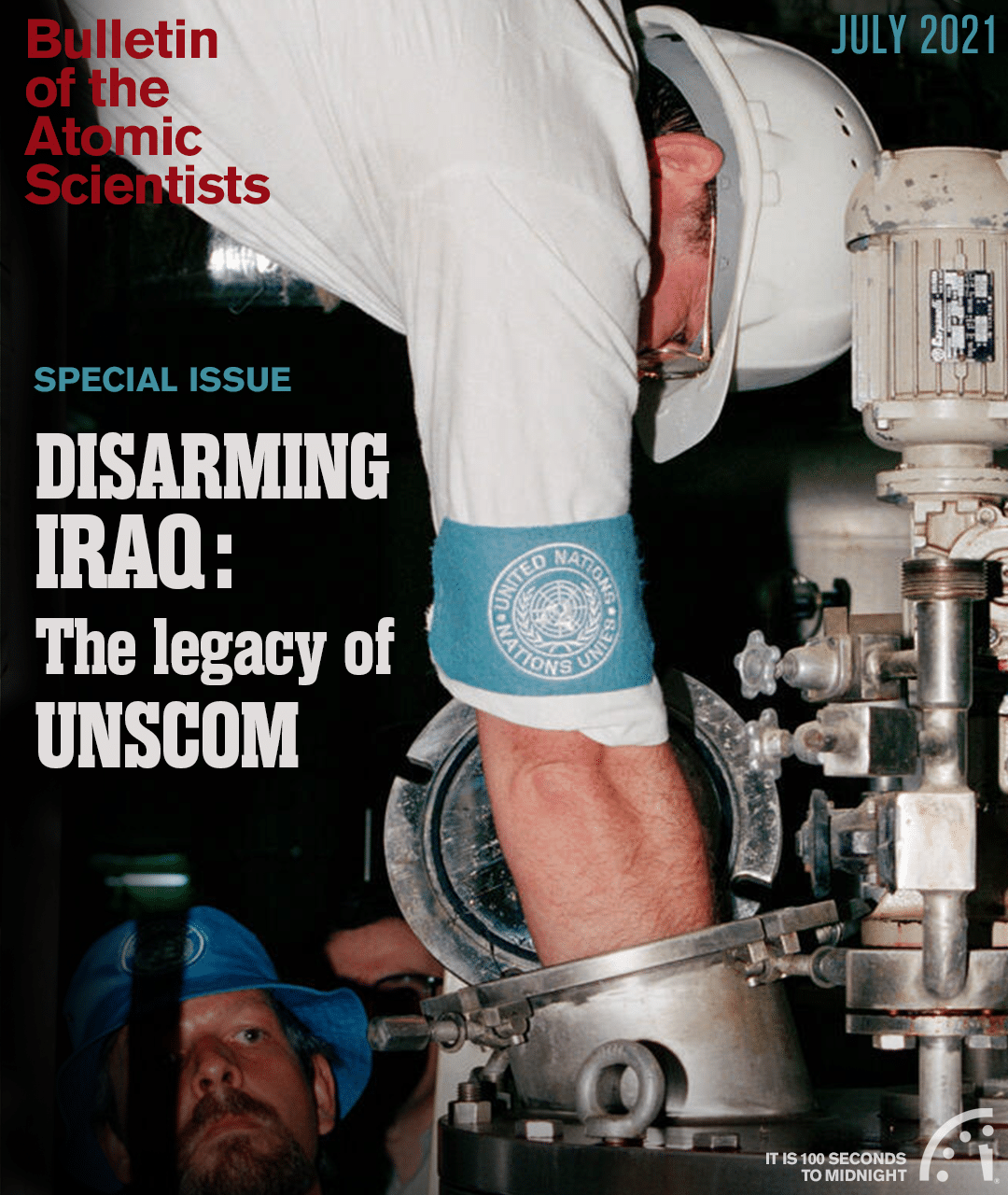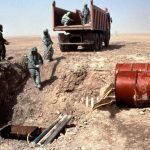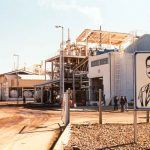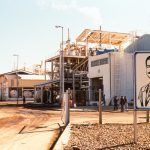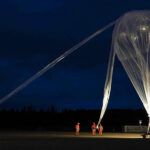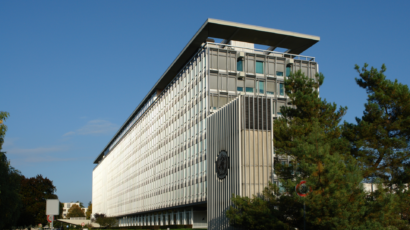Can small modular reactors help mitigate climate change?
By Arjun Makhijani, M.V. Ramana | July 21, 2021
Can small modular reactors help mitigate climate change?
By Arjun Makhijani, M.V. Ramana | July 21, 2021
Small modular reactors are in the news again. They have been picking up momentum ever since the much ballyhooed “nuclear renaissance” proclaimed early in the decade of the aughts flopped. Despite abundant financial subsidies and square miles of newsprint singing the praises of new nuclear power, only two of the more than 30 large new reactors announced during the height of the “renaissance” are being built; and those two are long delayed and hugely over budget; neither is complete. Enter small modular reactors, including hitherto untested designs. Proponents suggest they will address the well-known problems of nuclear power, including high costs, risk of severe accidents, and production of radioactive waste and become a principal component of the zero-carbon-emissions electricity system that is required to limit climate change. Let us consider these claims.
Typology
The word “small” in small modular reactors has generally come to mean a capacity of less than 300 megawatts (MW) of electricity (IAEA 2020, 1); (Bill Gates’s favorite Natrium design comes in a little higher at 345 MW). Typical present-day power reactors are several times larger—in the 1,000 to 1,600 MW range. Most small modular reactor proposals involve installing several modules at a single site so that the site’s total power generation capacity would be broadly similar to a large reactor. However, there are a few proposals for reactors to be used in isolation, typically in low-demand remote areas.
Small modular reactors can be divided into two broad categories:
- Light water reactors based on the same general technical and design principles as present-day power reactors in the United States, which could, in theory, be certified and licensed with less complexity and difficulty; and
- Designs that use a range of different fuel designs (like uranium coated in silicon carbide), moderators (like graphite), and coolants (like helium, liquid sodium, or molten salts).
Proponents claim that the latter will be ready for construction soon; the Energy Department, for example, promises “debut by 2030” (Department of Energy 2021). However, as explained below, the certification and licensing hurdles are high, making it likely that the second group would take far longer to operationalize effectively. Many of these designs are far from final, and they face challenges with the supply chain for fuel and materials that make commercialization more uncertain.
Economics and scale
The most important challenge confronting nuclear power in general, and small modular reactors in particular, is economic competitiveness with alternatives. Currently operational reactors try to address the cost problem by taking advantage of economies of scale. All else being equal, a reactor that produces three times as much power as a small modular reactor does not need three times as much steel or three times as many welds; that is one of the keys to economies of scale. Nuclear power reactors that generate amounts of electricity that are material in the climate mitigation context need complex technologies to control the reactions and the radioactive fission products that result from these reactions.
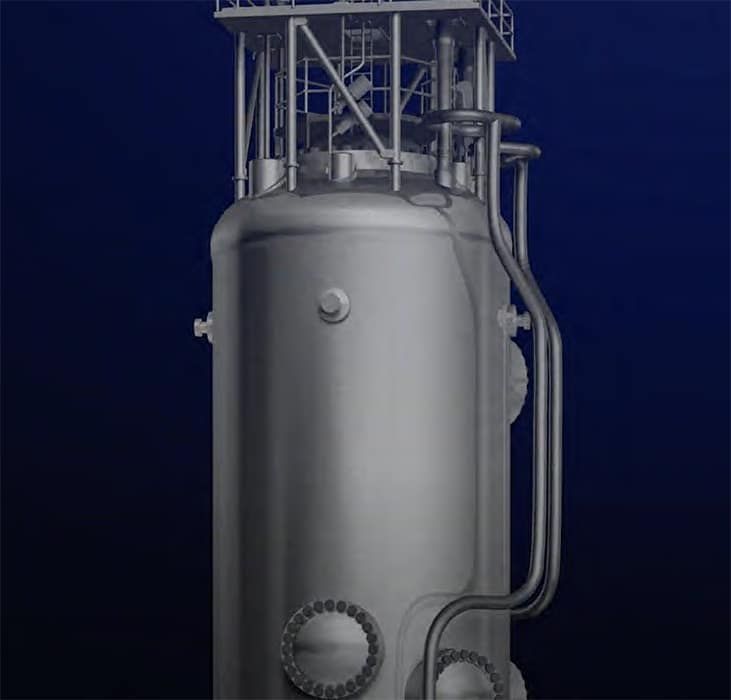
Proponents for small modular reactors claim that modularity and factory manufacture would compensate for the poorer economics of small reactors (Locatelli, Bingham, and Mancini 2014). A supply chain would be established to mass produce reactors components; assembly lines, like those of large passenger jets, would be established to build these components before transportation to the site, where construction would be faster and surer.
The road to such mass manufacturing will be rocky. Even with optimistic assumptions about rates of learning, several hundreds or even thousands of these reactors would have to be manufactured for the price per kilowatt to be comparable to large reactors (Glaser et al. 2015). (For comparison, there are roughly 450 nuclear power reactors operating today.) Thus, even under optimistic assumptions, small reactors would be more expensive than large nuclear reactors on a per kilowatt basis.
The cost may not come down at all, if history is a guide. The learning rate in the United States and France—two countries with the highest number of nuclear plants—was negative at a fleet-wide level. In other words, reactors that were constructed later actually cost more than those constructed earlier (Grubler 2013; Koomey and Hultman 2007). A negative learning curve means newer reactors have been, on the whole, more expensive than earlier ones.
For small modular reactors to consistently achieve the same costs as the present large reactors would be a monumental task. And at that point, small modular reactors would still be an economic failure, given the high costs of large reactors. The Wall Street firm, Lazard, estimates the average cost of utility-scale solar and wind power is approximately $40 per megawatt-hour; the corresponding average figure for large nuclear plants is about $160, four times as high, and the upper end of the range is as much as $198 (Lazard 2020). Further, while the costs of solar and wind continue to fall, nuclear costs have been rising. These cost differences between nuclear and renewables should be more than enough to allow for the variable output from solar and wind power fleets to be covered by complementary technologies like demand response and storage.
Some small modular reactor proponents suggest that nuclear power might provide a suitable complement to wind or photovoltaic power (Surina and McGough 2015; Ingersoll et al. 2015). But nuclear reactors, whether small or large, are not economically suitable for responding to variability because they have high fixed (capital) costs and low variable (fuel) costs. This is why nuclear power plants have been used as a baseload electricity source; it spreads out the fixed costs over the largest number of kilowatt-hours, making each one cheaper. Responding to variability will mean operation at partial load for much of the time, raising costs per unit of electricity. For instance, the cost per unit of electricity from a NuScale small modular reactor would rise by about 20 percent if the capacity factor is reduced from 95 percent to 75 percent (Ramana 2020).
Trying to use small modular reactors for producing other commodities, such as clean water by desalinating seawater or hydrogen or high-temperature heat, is also not economical for a variety of reasons. Most importantly the cost of the energy supply—nuclear power—is high. Economic modelling in the United States shows that there are much cheaper alternatives (Morgan et al. 2018).
Potential problems with mass manufacturing reactors
If an error in a mass-manufactured reactor were to result in safety problems, then the whole lot of reactors may have to be recalled. This was the case with the Boeing 737 Max aircraft and the Boeing Dreamliner. But how does one recall a radioactive reactor? What would happen to an electricity system that relies on factory-made identical reactors that need to be recalled? What would happen to the order book for reactors if there were a recall? These questions have not been addressed by the industry; indeed, they have not even been posed. Yet recalls are a predictable and consistent feature of mass manufacturing, from smartphones to jet aircraft.
The problem is not merely theoretical. One of the big economic problems of pressurized water reactors—the design commonly chosen for light water small modular reactors—was the need to replace the steam generators, often well before the end of license periods. Steam generators are massive, expensive pieces of equipment where the high-pressure water from the reactor is converted into steam, which drives the turbines to generate electricity. This problem has been recognized for decades; yet it persists. Just within the last decade, three US reactors—two at San Onofre in Southern California and one at Crystal River in Florida—were permanently shut due to serious problems arising from steam generator replacement. A Nuclear Regulatory Commission report from 1996 documents ten spontaneous steam generator tube ruptures over the previous two decades (MacDonald et al. 1996). Likewise, Russian nuclear submarines have suffered leaks involving steam generators (Ølgaard 1996).
Unlike present-day reactors, many small modular reactor light water designs are integral designs, wherein the steam generators are placed within the reactor vessel. In such a configuration, replacement would be essentially impossible. Problems with the steam generator could mean a permanent reactor shut down.
Recent experience with modular nuclear construction has not been a success. Modular construction was a central aspect of the design of the AP1000 pressurized water reactor; yet the AP1000 reactors built in the United States have experienced significant construction cost overruns and schedule delays. One AP1000 reactor construction project in South Carolina became so expensive that it was abandoned after $9 billion had been spent, and Westinghouse, the company responsible for the reactor design, filed for bankruptcy protection. A former member of the Georgia Public Service Commission told the Wall Street Journal, “Modular construction has not worked out to be the solution that the utilities promised” (Smith 2015).
The small modular reactor track record
The small modular reactor track record so far points to the same kind of dismal economic failure as for their larger cousins.
The US Energy Department has been pursuing small modular reactors since the last century. In 2000, the US Congress provided funding “to undertake a study to determine the feasibility of and issues associated with the deployment of… small reactors” (Department of Energy 2001, 1; Congressional Record 2001). The Energy Department’s Office of Nuclear Energy 2001 report reviewed nearly ten designs and concluded that “the most technically mature small modular reactor (SMR) designs and concepts have the potential to be economical and could be made available for deployment before the end of the decade, provided that certain technical and licensing issues are addressed” (Department of Energy 2001, iii).
The US Nuclear Regulatory Commission has been similarly optimistic. In October 2008, it projected that the certification review for the NuScale design would be completed by 2015. It estimated that it would also complete reviews for other designs, including the Pebble Bed Modular Reactor and the Hyperion reactor (currently Gen4 Energy) in the same time frame (Baker 2008). None of that happened.
These rosy predictions failed to materialize despite substantial government support. In the early 2010s, the Energy Department supported two small modular reactor designs: mPower by Babcock & Wilcox and NuScale. The first of these was a complete failure; after years of trying to get investors and funding, the mPower program was terminated (Downey 2015; Adams 2017).
NuScale, another recipient of government largesse, has fared a little better. But the earliest official projected deployment date is now 2029 or 2030—more than a decade later than the Energy Department’s estimate. Even that date is highly uncertain because the Nuclear Regulatory Commission’s Advisory Committee on Reactor Safeguards has identified serious safety concerns that will have to be addressed before any utility applies for permission to construct a small modular reactor (Advisory Committee on Reactor Safeguards 2020b; 2020a; NRC 2020). Significantly, a central concern involves the steam generator, which, as noted above, is inside the reactor vessel and a potential source of operational and economic problems.
The deployment schedule will also depend on whether there are enough customers. The only active proposal so far is to build several NuScale reactors at the Idaho National Laboratory site and sell the power so generated to several municipal utilities in Utah. But before any concrete has been poured, costs for the project have escalated from an estimate of about $4.2 billion in 2018 to $6.1 billion in 2020. As a result, many utilities have backed out of the project (Cho 2020). As of November 2020, these municipal utilities had only subscribed to about 100 megawatts, a fraction of what the proposed NuScale power plant will generate (LADPU 2020).
Non-light water reactor designs
Although these are often described as advanced, there is a history of attempts to build small modular reactor designs not based on standard light-water-reactor technology. This history and the underlying technological challenges show that these designs will have a number of problems. We discuss them briefly.
Sodium-cooled reactors: Despite approximately $100 billion spent worldwide since 1950, sodium-cooled reactors have not been commercially successful. Prototypes and demonstration plants have had high construction costs, experienced operational problems, and frequently suffered early closure (IPFM 2010). A pervasive problem has been leaks of sodium coolant; leaks have occurred in sodium-cooled reactors in Russia, France, India, the United States, and Japan (Guidez et al. 2008). Sodium catches fire on contact with air—a problem that, for instance, prematurely shut down Japan’s Monju reactor (IPFM 2010, Makhijani 2013).
High-temperature gas-cooled reactors: Many countries have built high-temperature gas-cooled reactors, including four commercial units of this type, in Germany and in the United States. All were operational and underwent a wide variety of small failures and unplanned events, including ingress of water or oil and fuel failures (Ramana 2016). As a result, these reactors were all shut down early, with operational lifetimes of only seven and 10 years for the US Peach Bottom and Fort St. Vrain reactors respectively, and one and 20 years for the German THTR and AVR Jülich reactors respectively.
Proponents argue that high-temperature gas-cooled reactors are not capable of melting down. However, there are serious accident risks associated with air and water ingress accidents, and there is considerable uncertainty about the behavior of these reactors under accident conditions (Englert, Frieß, and Ramana 2017; Moormann 2011; 2008). Further, graphite is susceptible to fires, as occurred at the United Kingdom’s Windscale graphite-moderated, gas-cooled reactor in 1957 that released radioactive isotopes, including 1800 terabecquerel (TBq) of iodine 131 and 180 TBq of cesium 137, into the atmosphere (Garland and Wakeford 2007).
High-temperature gas-cooled reactors are also economically more challenged than light-water reactors. Their lower-power density means that the reactor has a larger volume, which tends to increase the cost of construction. Even proponents of these reactors estimate that the capital cost will be about 20 percent higher than light-water reactors (Zhang and Sun 2007). This prognosis has been borne out in China, the only country building this type of reactor currently; the cost of its electricity has been estimated to be 40 percent more than the corresponding cost for light-water reactors (Yu 2016). Construction is also several years behind schedule (Schneider and Froggatt 2020).
Molten-salt reactors: Most of the interest in molten-salt reactors comes from two reactors built decades ago at the Oak Ridge National Laboratory. The first was the Aircraft Reactor Experiment that operated for just 100 hours in 1954 (IPFM 2010, 99). The other was the Molten Salt Reactor Experiment that operated intermittently from 1965 to 1969 (Haubenreich and Engel 1970).
The Molten Salt Reactor Experiment was not designed to generate electricity, and the heat generated dissipated to the atmosphere. Even in this simplified configuration, the experiment’s operations were far from exemplary. Over the four years, its operations were interrupted 225 times due to various problems, including sudden, usually unscheduled, shutdowns (called “scrams”) and fuel draining down the freeze valve (a component often touted as a safety feature in molten-salt reactor designs) (Guymon 1973, 15–51).
Management of weapons-usable fissile uranium-233 used in the experiment and processing and disposing of molten salt wastes has posed major challenges. Even though the reactor produced only eight megawatts (thermal) of power—a tiny fraction of commercial power reactors—the post-closure cost of dealing with these materials has run into the hundreds of millions of dollars (Alvarez 2013; Beaty et al. 2016).
Proliferation risks
The main pathways connecting nuclear energy with nuclear weapons are uranium enrichment and plutonium separation from spent fuel. Many of the advanced reactors are designed to be fueled with plutonium or with uranium at enrichment levels as high as 15 percent, much more than levels typical of light water reactors. For molten salt reactors that involve the use of thorium, the presence of uranium 233, which is fissile and even easier to use in nuclear weapons than plutonium 239 (Uribe 2018; Kang and Von Hippel 2001), means that they might pose even greater risks of proliferation.
Some reactor technologies are proposed to be built as “integral” designs; this involves processing of used fuel on site to recover fissile material for use in the reactor. Both sodium-cooled and molten salt designs of this type have been proposed. Separation of fissile materials increases nuclear proliferation risks when compared with leaving the fission products mixed in the spent fuel. The latter barrier to making nuclear weapons has been termed the “spent fuel standard” and is regarded the benchmark for non-proliferation (National Academy of Sciences 1995).
A 2009 report on the topic by several national laboratories concluded that on-site spent fuel processing technologies would provide little additional proliferation resistance (Bari et al. 2009). Indeed, integral reactors would make this problem much worse by distributing fissile material separation to every such nuclear plant site, making inspections more difficult and costly and, therefore, fissile material diversion less complex.
Regulation
New designs will mean that the process of getting safety approvals will likely take longer and be more expensive. In many cases, even setting up sound certification process will take years, since the safety and accident modes differ with each basic design. For instance, one risk with high-temperature gas-graphite reactors is fires rather than meltdowns.
To give a sense of financial scale, the development of the NuScale small modular reactor, which is the familiar light water design, is expected to cost roughly $1.5 billion for development and certification (Hopkins 2020; Chaffee 2020). Completely new non-light water reactor designs envisioned by some small modular reactor developers will very likely cost even more and take even longer to translate from the conceptual stage to designs licensed for construction.
Waste
Finally, small modular reactors, like their larger counterparts, will also produce radioactive nuclear wastes; many will produce more per unit of power generated for technical and economic reasons (Glaser, Hopkins, and Ramana 2013; Brown, Worrall, and Todosow 2017; Krall 2020). The US government is already paying billions of dollars in fines for not fulfilling its contractual obligations to take possession of spent fuel from existing reactors. The legislative plan in the 1982 Nuclear Waste Policy Act was for a deep geologic disposal repository to open in 1998. All of the plans in that act have come to naught after nearly four decades of effort.
Waste is also a problem for non-light water reactor designs. Many sodium-cooled reactors, for example, use metallic sodium fuel that cannot be disposed of in geological repositories without extensive processing (Krall and MacFarlane 2018). Waste from molten salt reactors will be highly radioactive due to fission products that were not vented in the off-gas and will include halides like uranium tetrafluoride. If such waste forms are buried as without processing, and they interact with water, they would produce corrosive hydrofluoric acid (Krall and MacFarlane 2018). Therefore, they would need to be processed before disposal using processes that will be costly and complex; moreover, such processing has never been carried out at scale.
Demand
One economic problem with small modular reactors arises from the very concept. This was made clear by the developers of the STAR-H2 design who pointed out that “the business risk would be transferred predominately to the supplier who must initially emplace a large factory for economy of mass production fabrication” and ‘‘[a] supplier would have to foresee a sufficient market to invest in factories large enough to achieve economy of mass production from production runs of many hundreds of turnkey plants’’ (IAEA 2007, 688). But electricity demand projections are difficult; demand has been consistently overestimated since the 1970s. That is why close to 100 reactors that were planned or under construction were cancelled in the first wave of nuclear construction.
One noteworthy problem with small modular reactors is related to the supply chain. A mistake for a large reactor affects the utility that made the error. Significant errors in grid-level projections needed to generate a large enough order book and sustain the supply chain, would mean skyrocketing costs for all customers or losses for suppliers—or both.
Electricity from small modular reactors is too expensive even in niche markets such as remote mines and communities that are not otherwise served by the grid and that are currently electrified using diesel plants with very high fuel costs. Further, even in a best-case scenario, where economics plays no part and where nearly every potential niche-market user purchases a small modular reactor, the net demand is estimated to be far smaller than the minimum demand necessary to construct the factories needed to build these reactors (Froese, Kunz, and Ramana 2020).
If there is no market to set up a factory, then small modular reactor plans run into a chicken-and-egg problem: without the factory, they cannot ever hope to achieve the theoretical cost reductions that are at heart of the strategy to compensate for the lack of economies of scale; but without the cost reductions, they are unlikely to get the large number of orders to set up a supply chain.
Small modular reactors will not help mitigate climate change
According to their proponents, small modular reactors and advanced reactors have a lot of advantages. Until any are built, they are paper advantages. As Admiral Hyman Rickover, father of the nuclear submarine program in the United States told the US Congress in 1957: “Any plant you haven’t built yet is always more efficient than the one you have built. This is obvious. They are all efficient when you haven’t done anything on them, in the talking stage. Then they are all efficient, they are all cheap. They are all easy to build, and none have any problems” (Joint Committee on Atomic Energy 1957, 70).
But, as detailed earlier, there is a considerable amount of experience around the world with constructing precursors to the reactors that are proposed. And this experience suggests that these reactors will not be cheap and will contribute to problems like radioactive waste generation and the potential for nuclear weapons proliferation and risk of severe accidents.
Above all, humanity does not have the time to invest in small modular reactors and advanced reactors. The climate problem is urgent. The Intergovernmental Panel on Climate Change and other international bodies have warned that to stop irreversible damage from climate change, global carbon emissions have to decline drastically within the next decade. The small modular reactor contribution in the next decade will be essentially zero. The prospects for small modular reactors beyond that are also grim, given that entire supply chains would need to be established after the first ones have been built, tested, and proven in the field.
There is no realistic prospect that small modular reactors can make a significant dent in the need to transition rapidly to a carbon-free electricity system. To invest in them is to throw good money after bad. The prospects of timely contributions by even the light water designs, with NuScale the most advanced in schedule, are dismal. The prospects for reactors of other designs like those with graphite fuels or sodium cooling are even more remote. Small modular reactors have a tough road to achieve cost parity with large reactors. Even with cost parity, the electricity they produce will still be far higher than alternative sources of carbon-free electricity.
Time and money are in critically short supply on the road to a climate-friendly energy system. An objective evaluation with these criteria in mind indicates no realistic prospect for small modular reactors to play a timely and materially significant role in climate change mitigation.
Together, we make the world safer.
The Bulletin elevates expert voices above the noise. But as an independent nonprofit organization, our operations depend on the support of readers like you. Help us continue to deliver quality journalism that holds leaders accountable. Your support of our work at any level is important. In return, we promise our coverage will be understandable, influential, vigilant, solution-oriented, and fair-minded. Together we can make a difference.


